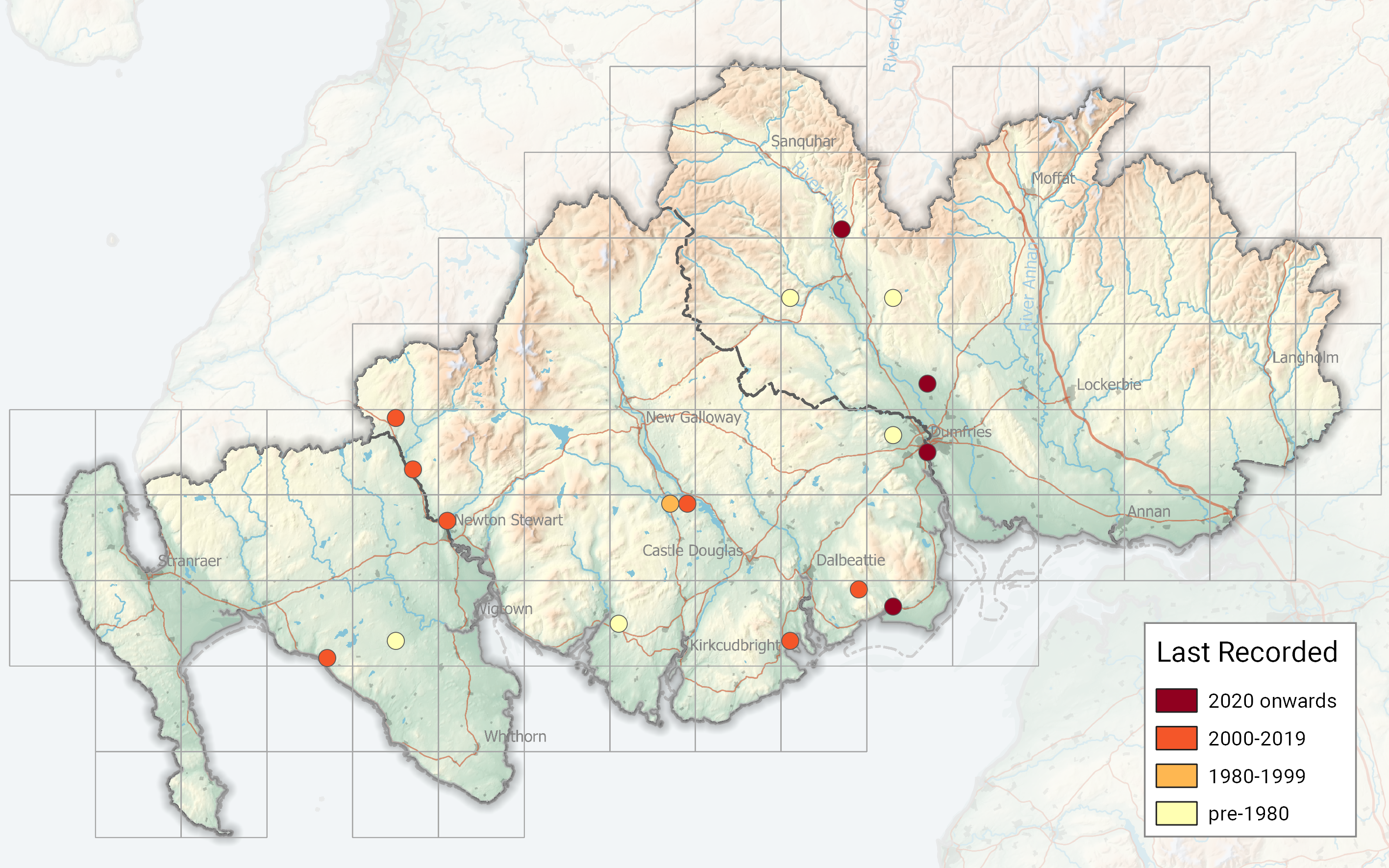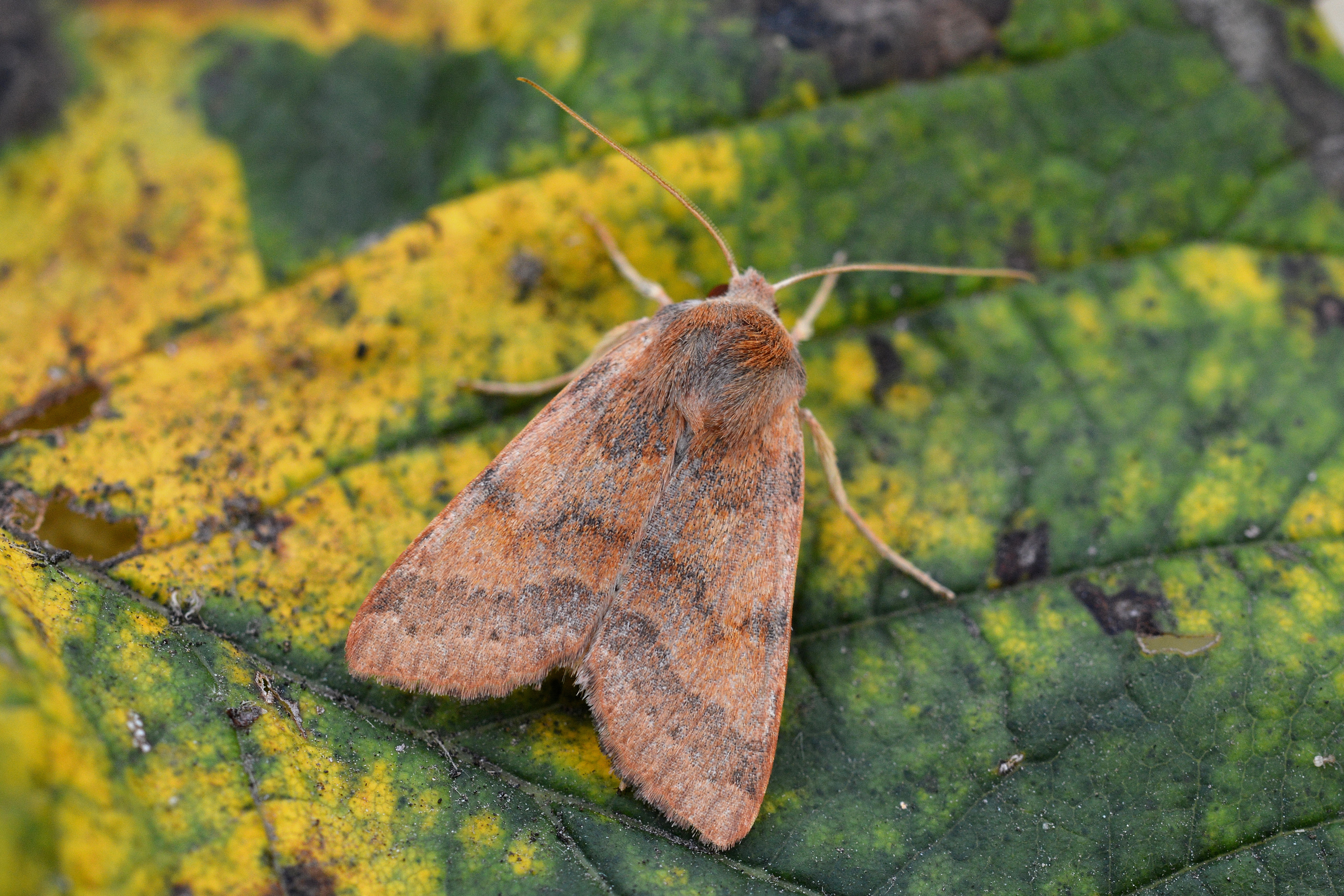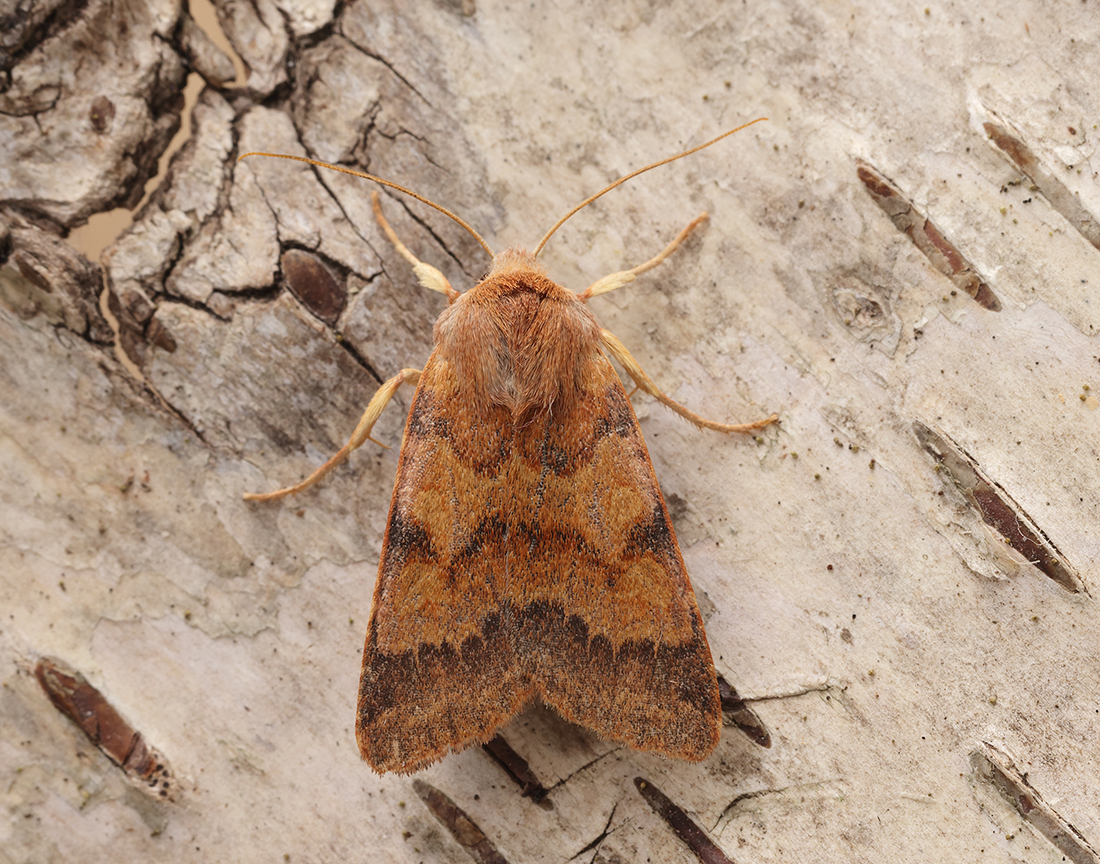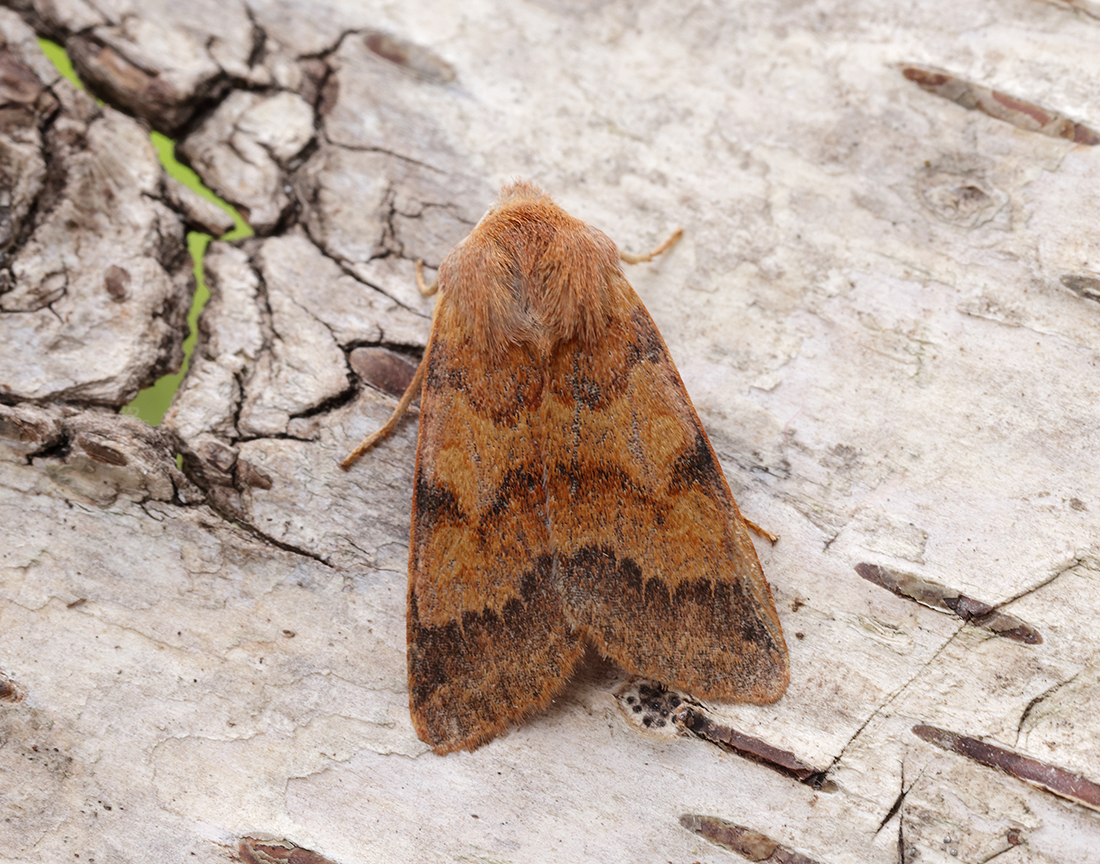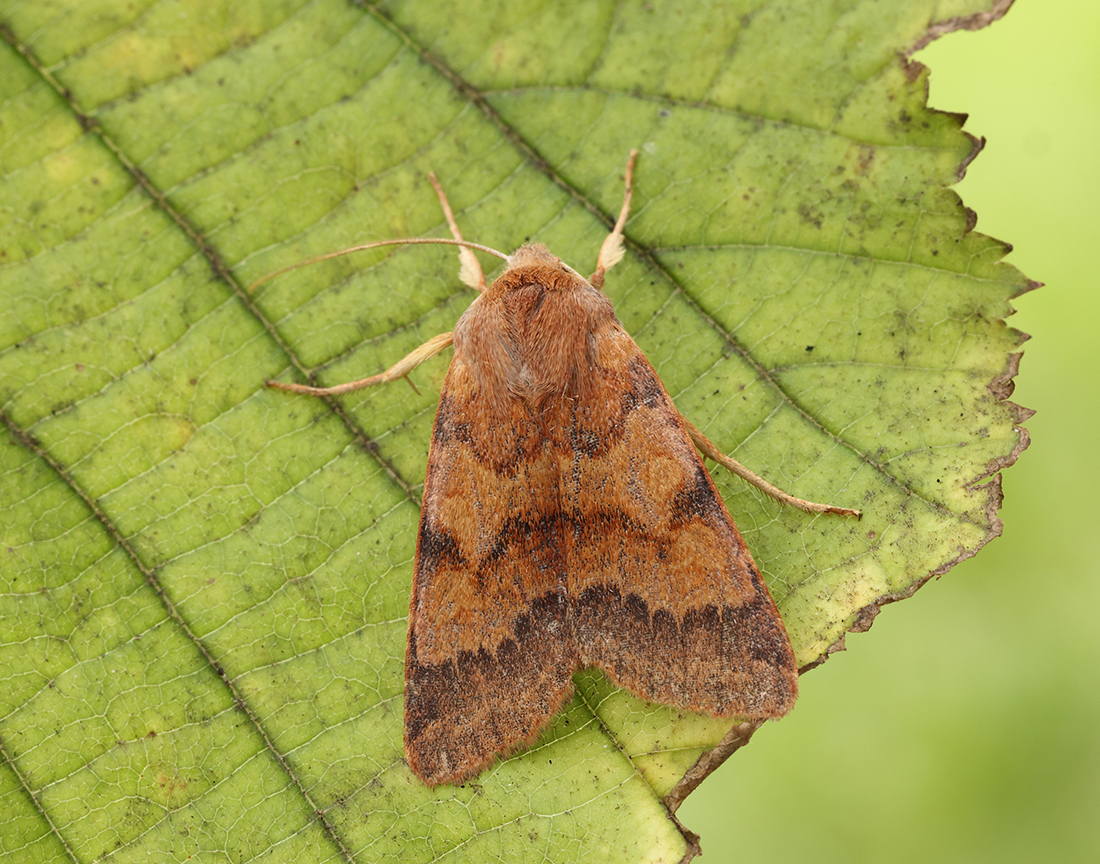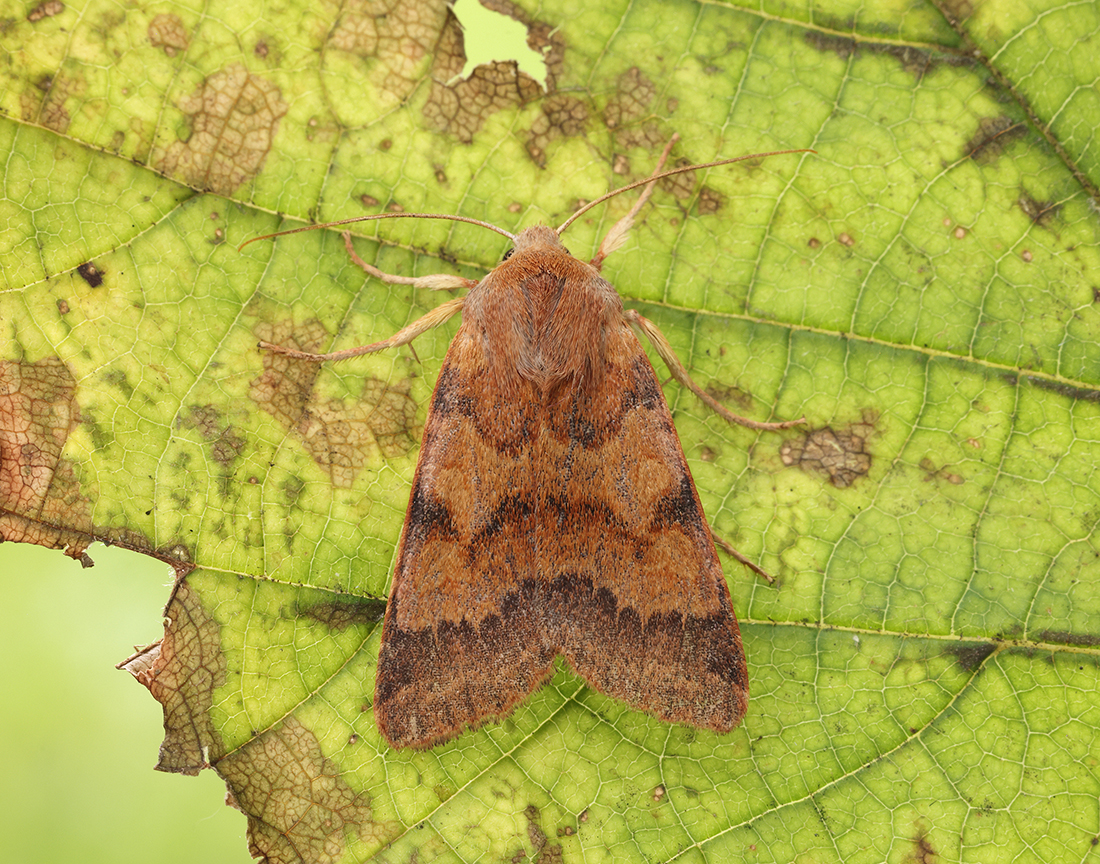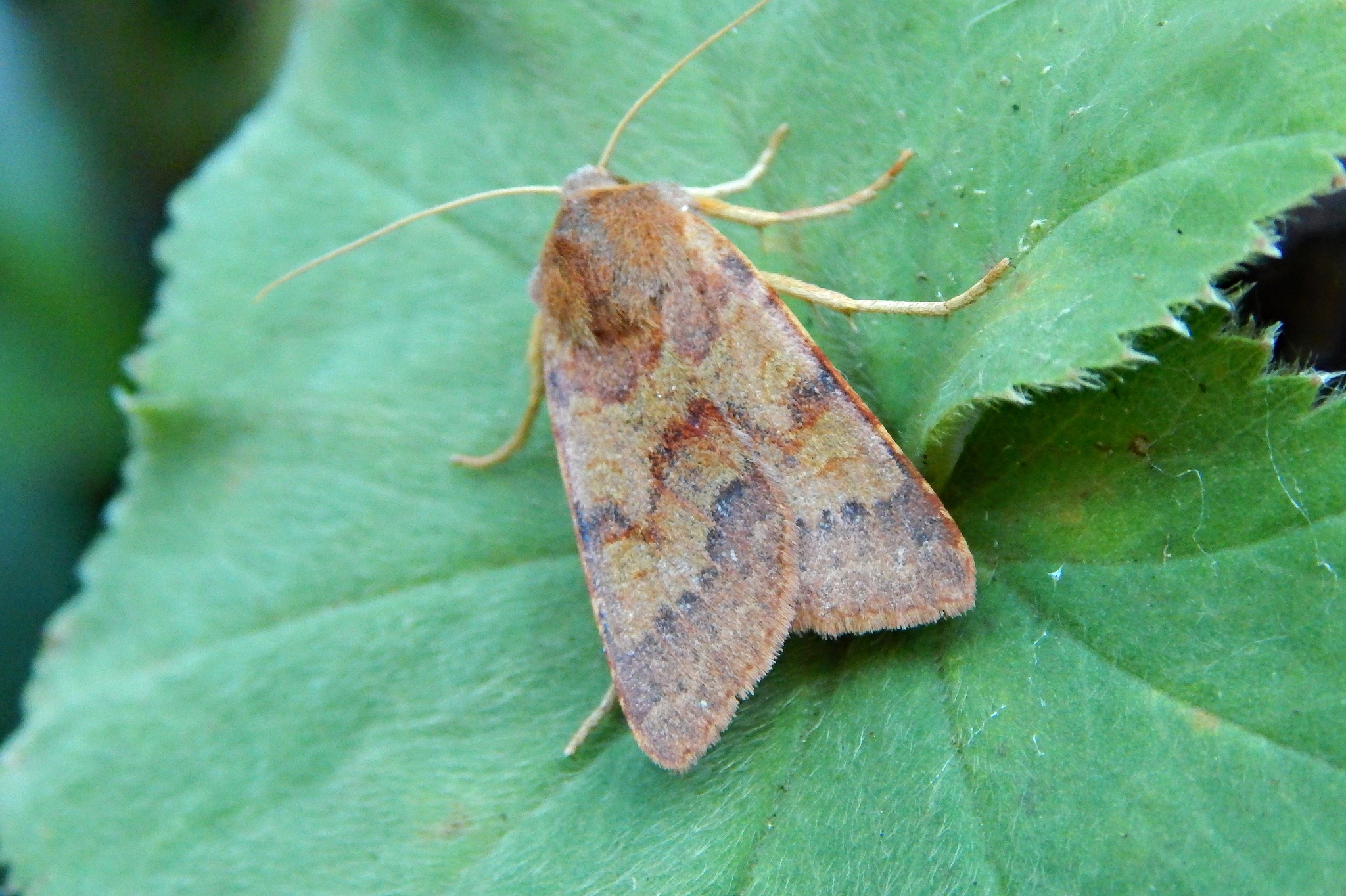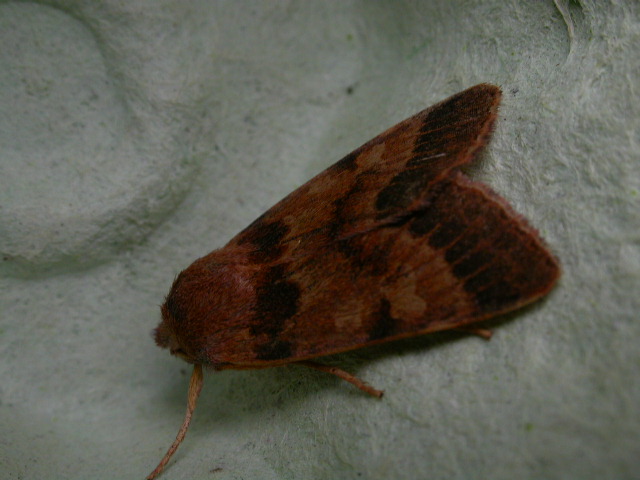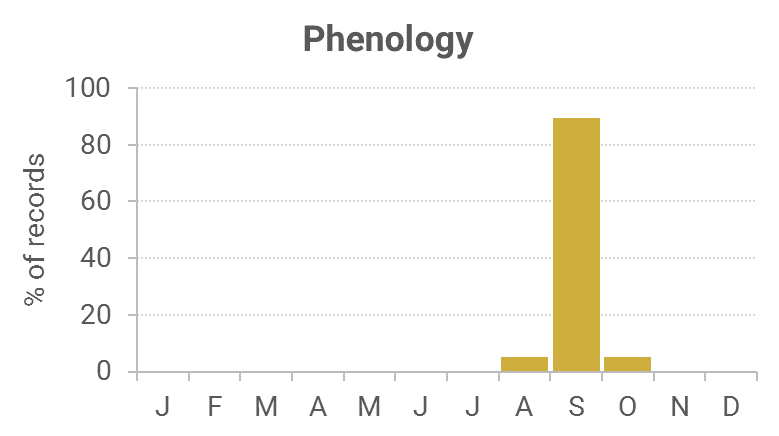Identification
The variable brown ground colour of the forewing, with wide dark reddish-brown bands at the base and termen should aid identification.
Recording Method.
Attracted to light, also comes to sugar and flowers.
Life cycle
One generation. Overwinters as an egg. Larvae present April to June, being most active at night. Later constructing a cocoon underground with pupation about two months later.
Larval foodplants
Birches, elms, oaks and willows.
Habitat
Broadleaved woodland, heathland and moorland. Regularly feeds on bramble berries.
History
Lennon (1863) stated that it was rather common and that it had occurred at Terregles (VC72). Gordon (1913) had found it fairly common. It also came to sugar in the woods and on sugared posts on the moor at Corsemalzie, Wigtownshire. Earliest date was 6th September 1910.
Sir Arthur Duncan (1909-84) during his lifetime had found it at Closeburn and Tynron (VC72).
In 1977 there was one record from all of the Rothamsted stations, namely Gatehouse of Fleet, on 23rd September. On the Hensol Estate another was trapped on 8th September 1981. Two more records occurred in 2003 at Garheugh (VC74) in August, and Aucheninnes Moss (VC73) in September, while on 27th September 2010 one was trapped at Old Torr, Auchencairn Bay.

